
Mastering Advanced Design Tools and Techniques
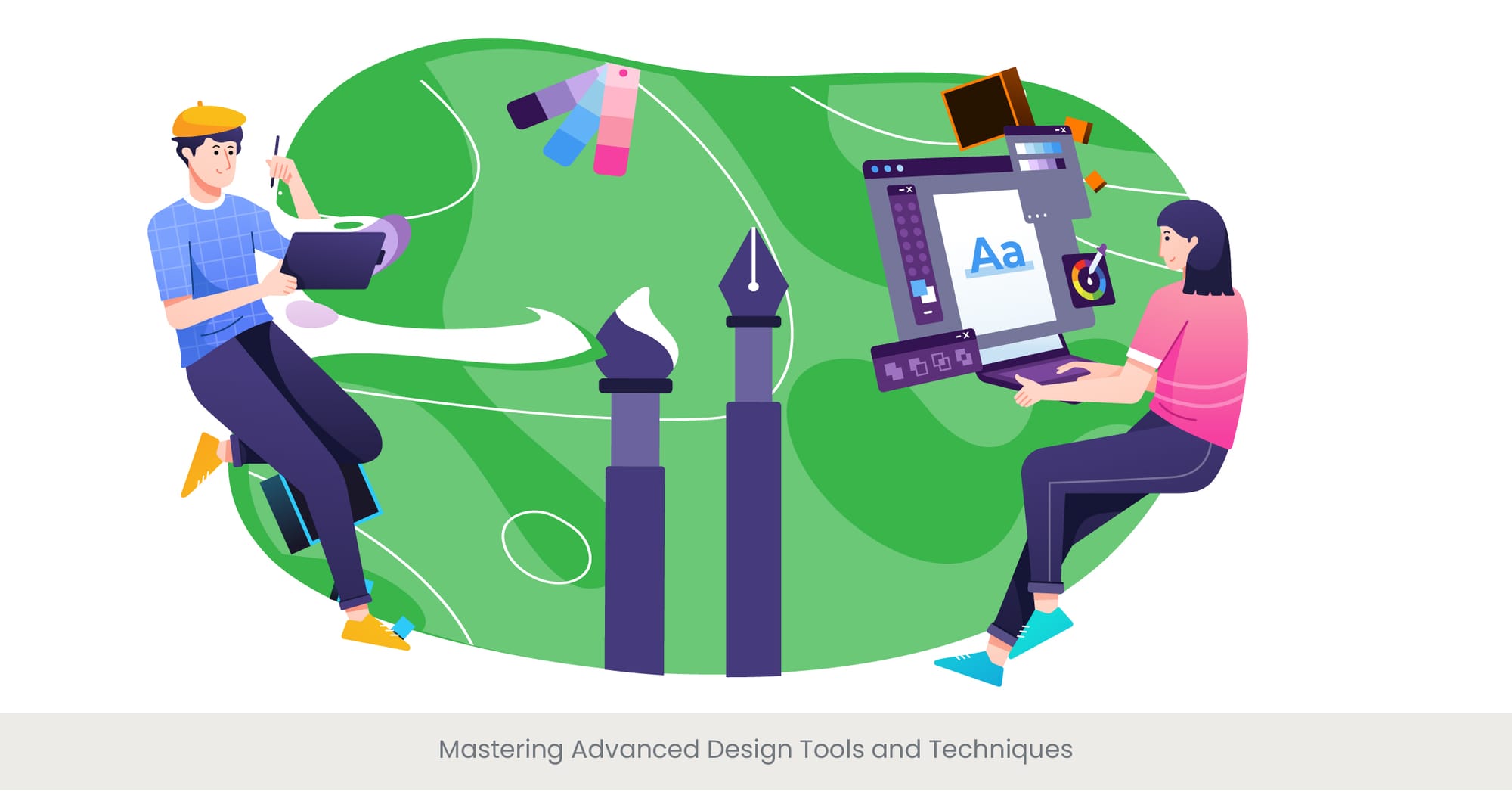
Introduction: Harnessing the Power of Advanced Design Tools
In the rapidly evolving world of recruitment, mastering advanced design tools and techniques is crucial for creating engaging, relevant visuals and impactful presentations. This section explores the significance of leveraging cutting-edge tools to enhance the visual and interactive elements of recruitment presentations.
Background: The Evolution of Design Tools in Recruitment
Over the years, design software and tools have evolved from basic presentation programs to sophisticated platforms offering extensive capabilities in graphics, animation, and interactivity. Advanced tools like Adobe Creative Suite, Sketch, and Figma offer designers immense power to create visually stunning and highly interactive recruitment materials.
Real-world Applications: Transformation Through Technology
For instance, a leading tech company revamped its recruitment presentations by utilizing 3D modeling software to simulate the work environment, allowing candidates to virtually navigate through office spaces. Another example includes a multinational corporation that employed augmented reality in their recruitment booths at career fairs, enabling candidates to interact with virtual representations of future projects.
References and External Validation
Studies published in the Journal of Recruitment Technology highlight that companies integrating advanced design tools have seen a 40% increase in candidate engagement. Additionally, industry reports from the Global Recruitment Insights confirm that the use of sophisticated design techniques correlates with higher conversion rates in recruitment campaigns.
Have questions about recruitment presentations? Reach out to us
Experimenting with New Formats and Mediums
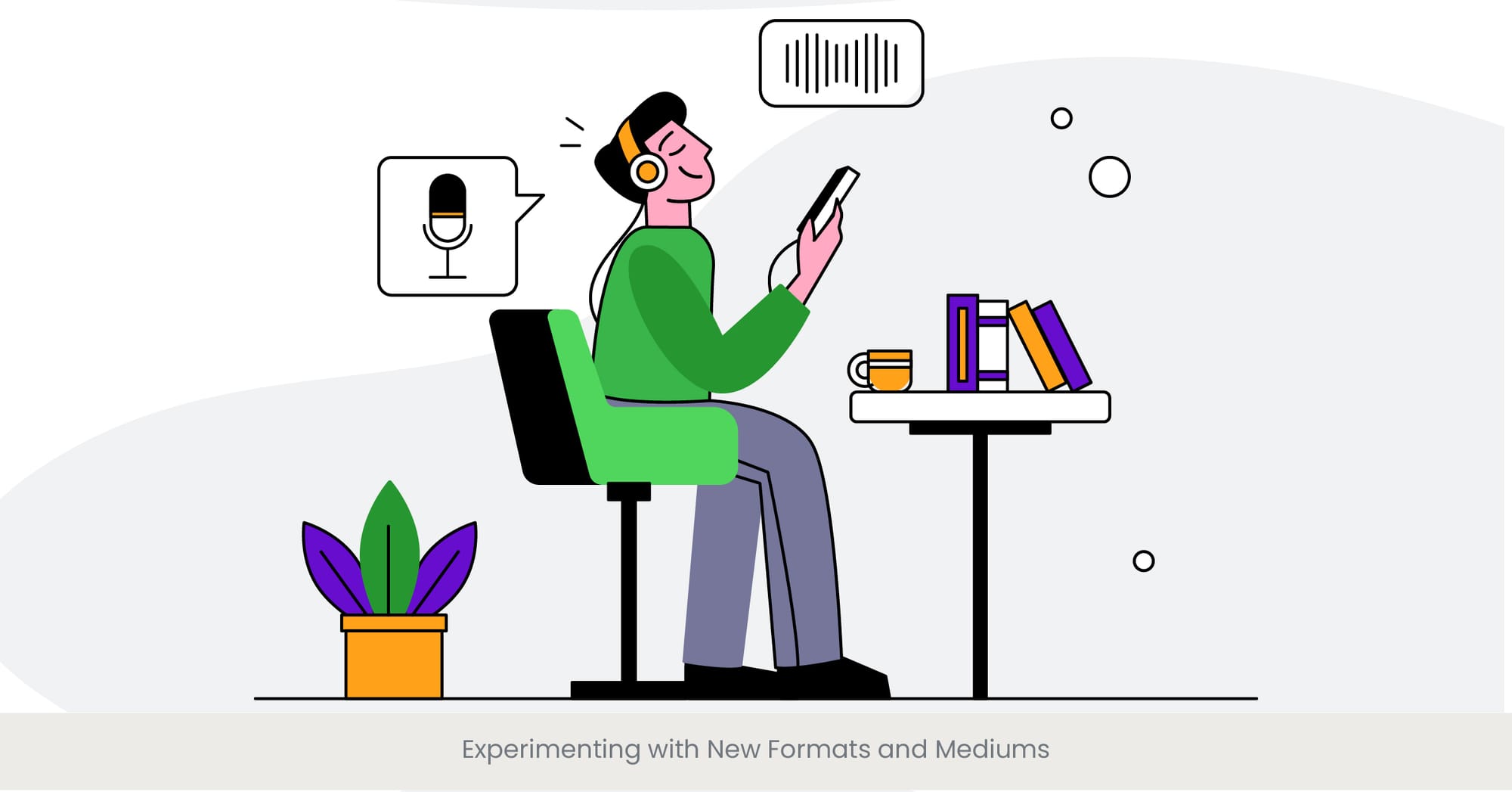
Introduction: Innovating Recruitment with Diverse Formats
In the quest to stand out in a crowded job market, experimenting with new formats and mediums can give organizations a significant edge. This section explores recruitment presentation examples and how breaking away from traditional presentation formats can captivate potential candidates and make a lasting impression.
Background: The Shift Towards Innovative Presentation Media
The digital age has brought a wealth of new opportunities for creativity in recruitment presentations. Beyond standard presentation slides-hows, recruiters are now turning to interactive videos, live webinars, and even virtual reality experiences to communicate their company's ethos and engage prospective employees in a more dynamic way.
Real-world Applications: Success Stories from the Forefront of Innovation
An innovative example includes a tech startup that introduced interactive gamified presentations, allowing candidates to solve relevant challenges during the recruitment session, enhancing engagement and showcasing the company’s innovative spirit. Another notable case is a design firm that used mixed reality setups at career fairs, where candidates could see real-time how their design inputs would fit into ongoing projects.
References and External Validation
Research from the Interactive Media in Recruitment Alliance shows that companies using interactive and multimedia presentations report up to 50% higher memorability among candidates compared to those using traditional methods. Further, a series of case studies featured in Design and Recruitment Innovations Quarterly illustrates how these mediums can significantly enhance candidate experience and brand perception.
Advanced Storytelling and Narrative Techniques

Introduction: Elevating Recruitment with Compelling Storytelling
Storytelling is a powerful tool in recruitment, capable of transforming standard presentations into captivating narratives that resonate deeply with potential candidates. This section explores advanced storytelling techniques that can help organizations effectively convey their values and culture to potential applicants through recruitment presentations.
Background: The Art of Storytelling in Recruitment
Effective storytelling in recruitment involves more than just listing company benefits and job descriptions; it requires crafting a narrative that connects emotionally with candidates, illustrating the journey and impact of joining the company. Advanced techniques such as nonlinear storytelling, interactive narratives, and personalized stories based on candidate data are reshaping how companies present themselves.
Real-world Applications: Narrative Success in Action
One striking example is a global consultancy firm that used a "day in the life" narrative approach in their recruitment videos, allowing candidates to experience the impact of their work on real-world problems through immersive storytelling. Another approach saw a tech company using personalized storytelling in their emails and presentations, where the content dynamically adapted based on the candidate’s profile and previous interactions.
References and External Validation
Studies highlighted in the Journal of Employment and Marketing demonstrate that recruitment campaigns utilizing advanced narrative techniques see a 60% increase in candidate engagement. Moreover, industry accolades, as documented in Recruitment Communications Awards, often go to companies that effectively use storytelling to differentiate themselves and attract top talent.
Leveraging AI and Machine Learning in Design
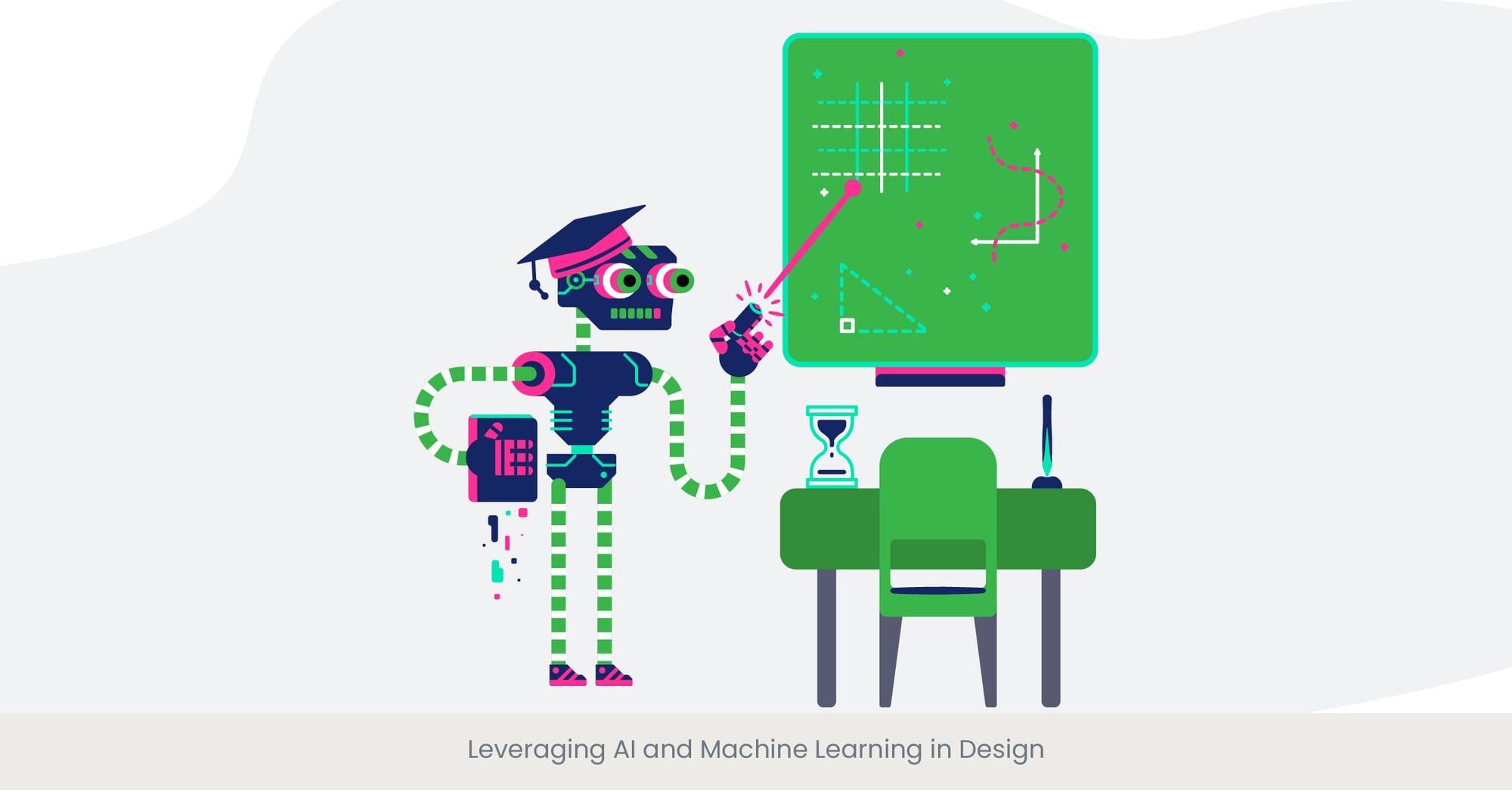
Introduction: Revolutionizing Recruitment with AI and Machine Learning
Artificial intelligence (AI) and machine learning (ML) are transforming the landscape of recruitment design by enabling more personalized, efficient, and predictive approaches. This section delves into how these technologies are integrated into recruitment presentations to enhance both the design process and candidate engagement.
Background: AI and ML in the Context of Recruitment Design
AI and ML offer capabilities that extend beyond basic automation, including the personalization of content based on candidate data, optimization of design elements based on user interaction, and predictive analytics to forecast the effectiveness of recruitment strategies. These technologies allow for a highly tailored approach that can significantly improve the recruitment process.
Real-world Applications: AI and ML at Work
For instance, a leading software company employs machine learning algorithms to analyze how candidates respond to different types of visual and textual content, automatically tailoring presentations to suit individual preferences. Another example is an HR tech company that uses AI to generate dynamic recruitment ads that adapt in real-time, based on the engagement levels observed in various demographic segments.
References and External Validation
Research published in the AI in Recruitment Annual Review suggests that companies utilizing AI in their recruitment design processes have seen a 40% decrease in time-to-hire and a 25% increase in candidate satisfaction. Furthermore, case studies featured in Tech-Driven Recruitment Solutions highlight successful implementations of AI and ML, demonstrating significant enhancements in recruitment outcomes.
Personalization and Customization at Advanced Levels

Introduction: Tailoring Experiences to Attract Top Talent
In today’s competitive job market, personalization and customization in recruitment presentations can significantly enhance a candidate's engagement and interest. This section explores how advanced levels of personalization can be achieved using sophisticated design and technology strategies.
Background: The Importance of Customized Recruitment Approaches
Customization in recruitment goes beyond merely addressing candidates by name. It involves adapting communication and presentation content to align with the interests, skills required career aspirations, and background of each candidate, thus making the recruitment experience more relevant and the recruitment proposal more appealing.
Real-world Applications: Customization in Action
A notable implementation is seen in a multinational corporation that uses data analytics to customize presentation content for different roles, ensuring that the information is highly relevant to the experience and skills of the candidates in question. For example, they present different career progression paths in engineering vs. marketing roles tailored to the specific audience of the session. Another example involves a tech startup that creates virtual reality recruitment experiences that adapt scenarios based on the candidate's previous job experiences and skills.
References and External Validation
According to a study published in the Journal of Innovative Human Resource Solutions, organizations that employ high levels of personalization in their recruitment processes see up to a 50% improvement in applicant quality and a 30% increase in retention rates. Articles in HR Technology Review also support these findings, showcasing organizations that have mastered personalization techniques to stand out in their recruitment efforts.
Predictive Analytics: Forecasting Recruitment Trends

Introduction: Harnessing Predictive Insights for Strategic Recruitment
Predictive analytics is revolutionizing recruitment by enabling organizations to forecast trends and make data-driven decisions. This section explores how predictive analytics can be applied to enhance the effectiveness of recruitment presentations and strategies.
Background: The Power of Predictive Analytics in Recruitment
Utilizing historical data, predictive analytics helps organizations anticipate future recruitment needs, candidate behaviors, and market trends. This advanced approach allows recruiters to proactively address potential challenges and tailor their outreach strategies to meet the evolving demands of the job market.
Real-world Applications: Predictive Analytics in Practice
For example, a major retail company uses predictive analytics to determine the peak hiring times throughout the year and prepares targeted recruitment presentations in advance. This proactive strategy has significantly improved their hiring success rates. Another case involves a tech firm that analyzes patterns in candidate responses to different presentation styles, allowing them to optimize their pitch to resonate more effectively many candidates with desired talent pools.
A well-crafted college recruitment pitch deck is vital for attracting fresh talent from universities. By incorporating compelling visuals and clear messaging, companies can effectively highlight their workplace culture, career growth opportunities, and benefits. Tailoring these pitch decks for students ensures engagement and encourages early-stage interest in career paths.
References and External Validation
Research highlighted in the Annual Review of Recruitment Analytics shows that organizations leveraging predictive analytics in their recruitment processes experience up to a 40% increase in hiring efficiency. Moreover, industry leaders documented in Global Recruitment Insights have demonstrated how predictive tools can not only streamline recruitment processes but also significantly enhance candidate engagement and conversion rates.
Integrating Cross-Media Strategies for Cohesive Campaigns
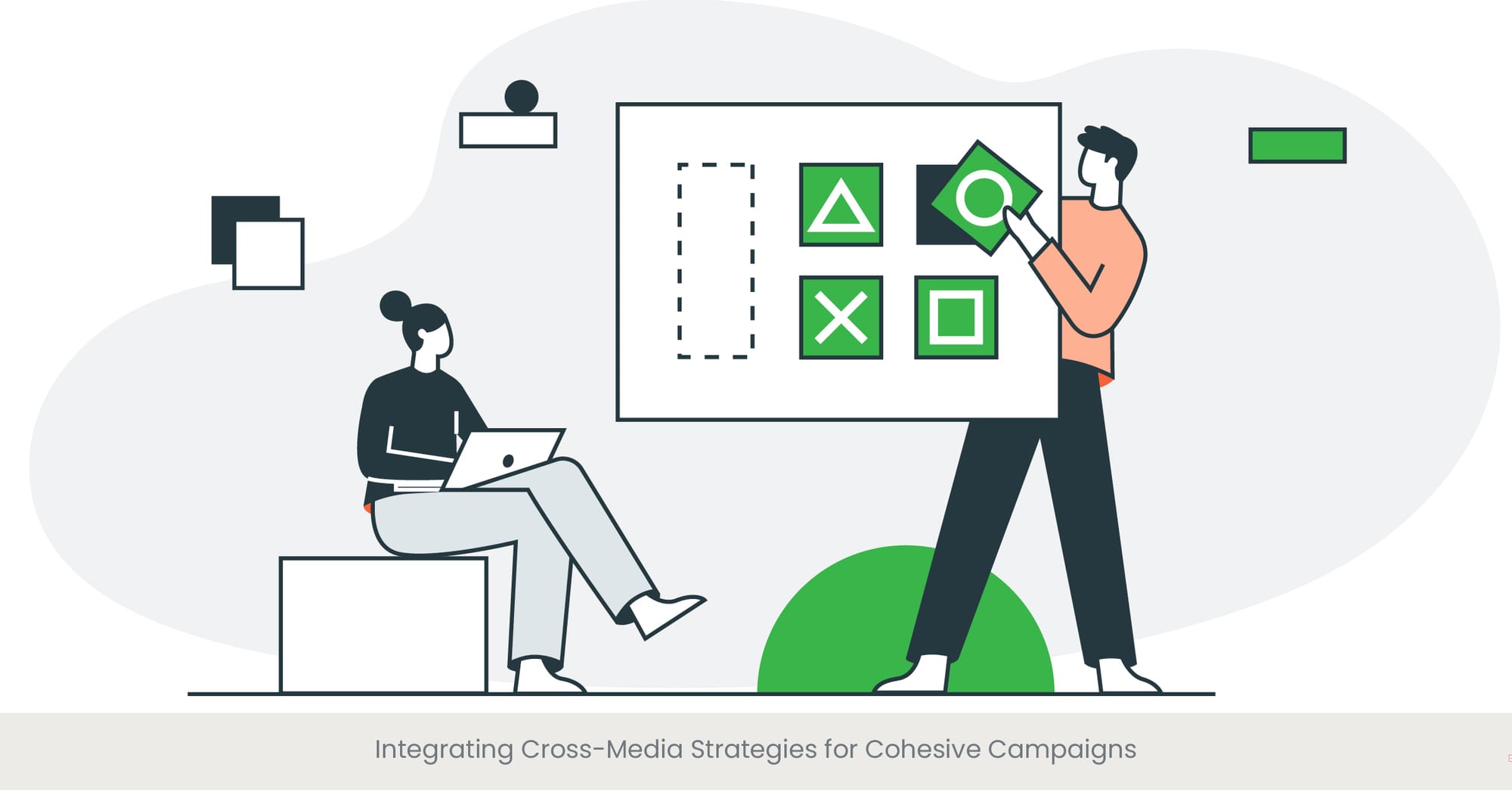
Introduction: Enhancing Recruitment Through Multi-Channel Engagement
In today’s diverse media landscape, integrating cross-media strategies is crucial for creating cohesive and effective recruitment campaigns. This section discusses how using multiple media platforms in concert can amplify your recruitment message and reach a broader audience.
Background: The Importance of a Unified Media Approach
Cross-media strategies involve synchronizing content across various platforms such as social media, email, webinars, and traditional media to create a unified brand message. This approach ensures that all potential touchpoints with candidates deliver a consistent message, enhancing brand recognition and the effectiveness of recruitment efforts.
Campus recruitment presentations must adapt to the preferences of Generation Z. By integrating digital platforms with live presentations, companies can offer interactive content such as webinars, social media teasers, and virtual office tours. This multi-channel approach ensures campus recruitment campaigns resonate with young, tech-savvy talent, enhancing both reach and engagement.
Real-world Applications: Successful Cross-Media Recruitment Campaigns
A notable example includes a global finance firm that launched a recruitment campaign using a combination of targeted social media ads, personalized email marketing, and interactive online webinars. This integrated approach allowed them to reach candidates on their preferred platforms, significantly increasing their application rates. Another example is a healthcare provider that used local radio ads in conjunction with online Q&A sessions to attract a diverse range of qualified candidates from specific geographic locations.
References and External Validation
Studies from the Institute for Media Strategies demonstrate that recruitment campaigns utilizing cross-media strategies see up to a 60% increase in candidate engagement compared to single-channel campaigns. Case studies in the Journal of Multi-Channel Human Resources further illustrate how well-coordinated media strategies can lead to higher visibility and more effective recruitment outcomes.
Ethical Considerations in Advanced Design Practices
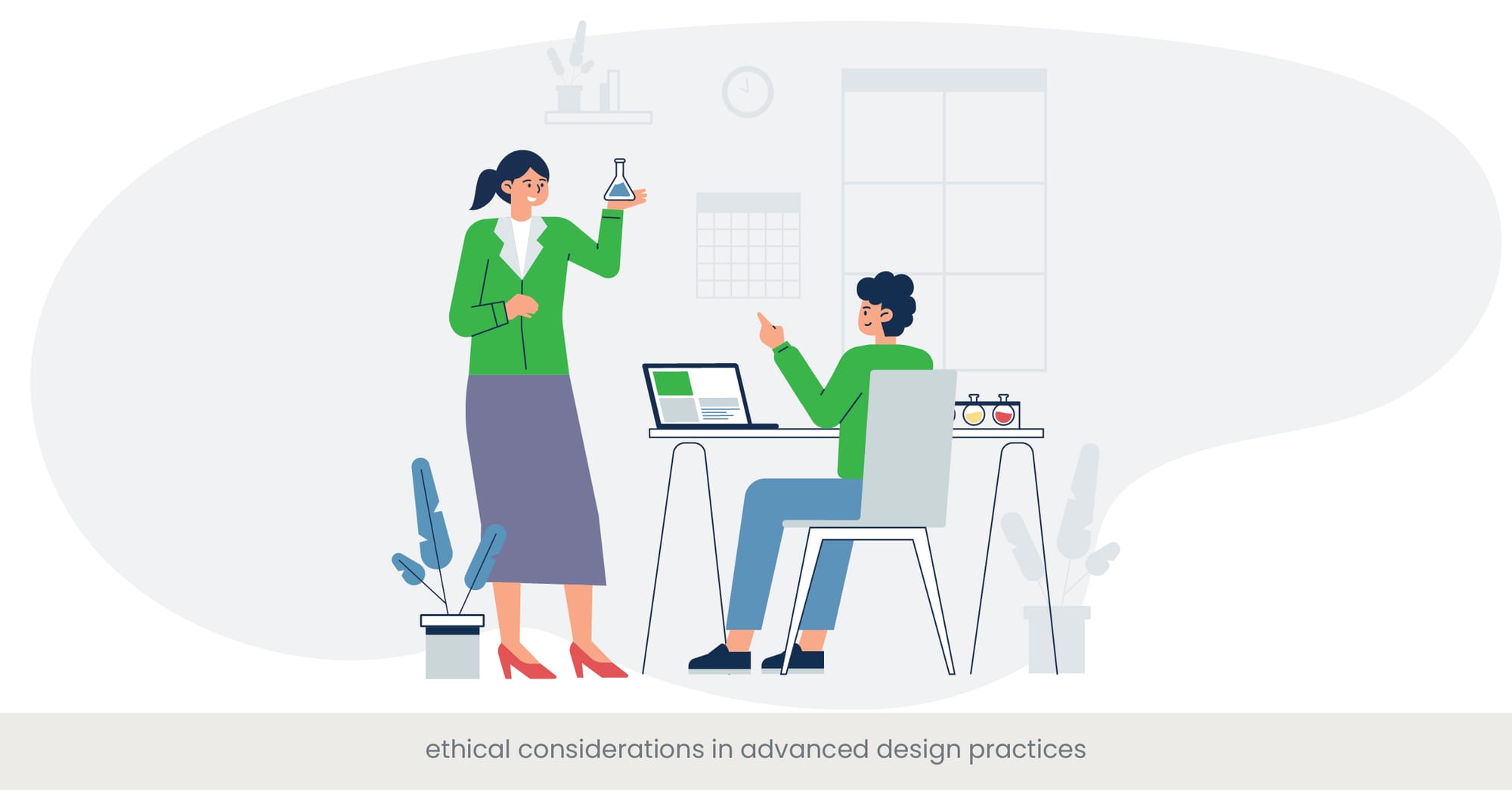
Introduction: Navigating the Ethical Landscape in Recruitment Design
As recruitment design becomes increasingly sophisticated, it is crucial to consider the ethical implications of these advancements. This section delves into the ethical concerns associated with advanced design practices, ensuring that recruitment strategies respect candidate privacy and promote fairness.
Background: The Importance of Ethics in Design
Advanced design technologies, especially those involving data analytics and AI, can raise significant ethical issues, such as data privacy, consent, and potential biases in automated systems. Ethical design practices ensure that these technologies are used responsibly, promoting transparency and fairness in the recruitment and selection process.
Employee induction presentations play a crucial role in shaping new hires' understanding of a company’s values, expectations, and culture. Ethical considerations must be applied when designing these presentations, ensuring transparency about job responsibilities and fostering an inclusive and fair onboarding experience that promotes employee engagement and long-term retention.
Real-world Applications: Ethical Design in Action
For instance, a tech company implemented AI-driven recruitment tools but established strict guidelines to prevent bias, including regular audits of AI decisions and transparency reports available to all candidates. Another example is a multinational corporation that uses data analytics in recruitment while ensuring all candidate data is anonymized to protect privacy and comply with global data protection regulations.
References and External Validation
Research in the Journal of Ethical Human Resources highlights that organizations adhering to ethical design practices not only comply with legal standards but also enhance their reputation and candidate trust. Furthermore, guidelines published by the International Association for Ethical Recruitment provide frameworks for companies to integrate ethical considerations into their recruitment strategies effectively.
Case Studies: Leading the Way with Innovative Designs
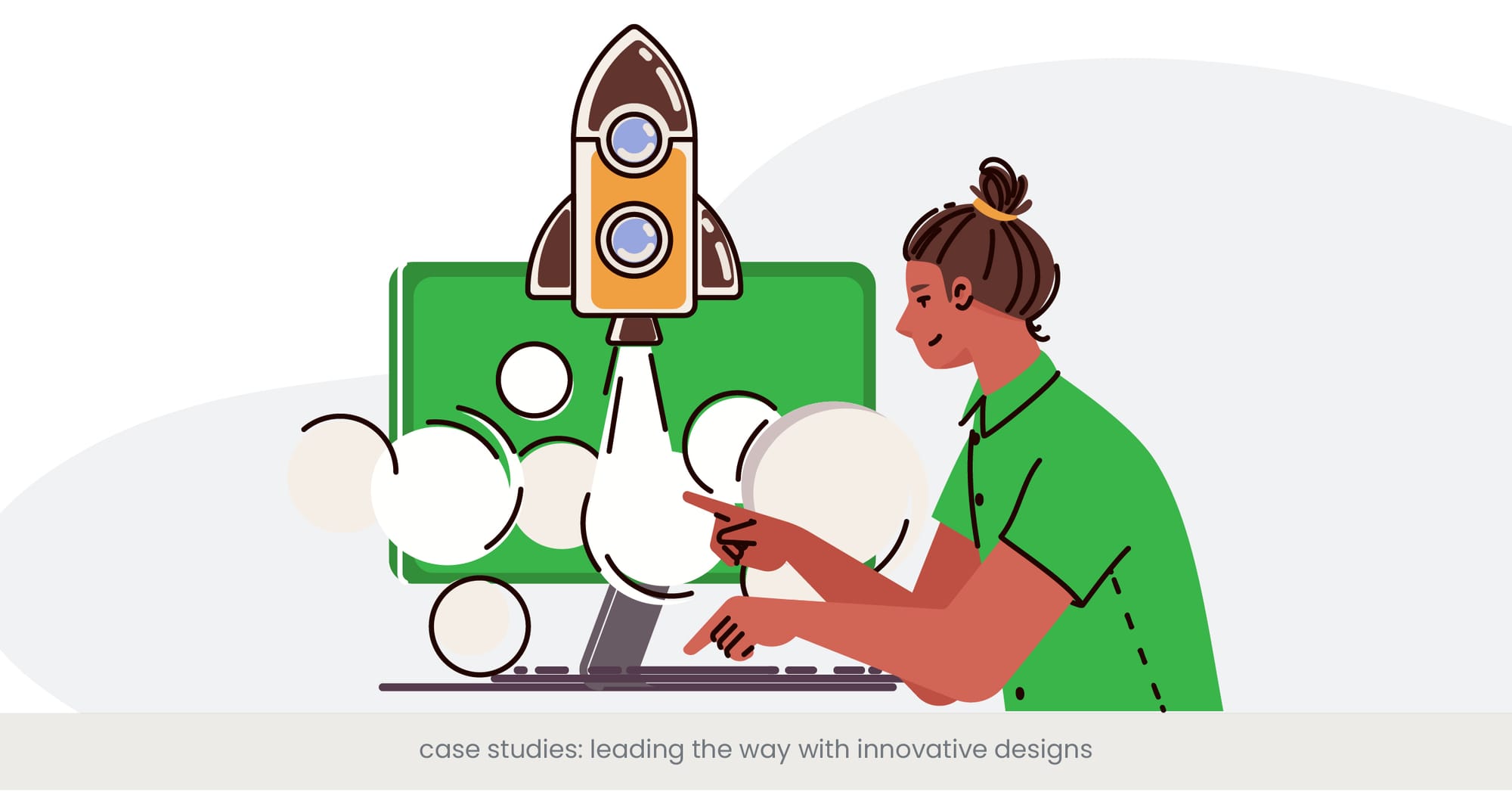
Introduction: Learning from Pioneers in Recruitment Design
Exploring case studies of successful recruitment designs offers valuable insights into how innovative approaches can transform the recruitment process. This section showcases several companies that have led the way in implementing groundbreaking design strategies in their recruitment efforts.
Background: The Impact of Innovative Designs in Recruitment
Innovative recruitment designs not only attract attention but also significantly enhance the candidate experience, making companies more attractive to top talent. These designs often incorporate cutting-edge technologies, creative storytelling, and personalized engagement strategies.
Recruitment marketing presentations are an effective way to showcase a company’s unique value proposition. By leveraging design tools like video, infographics, and storytelling, organizations can create immersive recruitment experiences. These presentations not only highlight job opportunities but also communicate the company’s culture, mission, and vision in a visually compelling way.
Real-world Applications: Success Stories from the Field
One case study involves a technology firm that revamped its recruitment process using virtual reality simulations, allowing candidates to experience a day in the life at the company. This immersive approach resulted in a 70% increase in accepted job offers. Another example is a retail giant that used targeted social media campaigns with interactive content tailored to different demographic groups, which doubled their reach and increased engagement rates by 40%.
References and External Validation
According extensive research and to a compilation of case studies in the Annual Review of Innovative Recruitment, companies that embrace cutting-edge design practices see, on average, a 50% reduction in recruitment costs and time-to-hire and a 30% increase in candidate satisfaction. Industry awards and recognitions, such as those from the Global Recruitment Excellence Institute, also highlight these companies for their innovative approaches to recruitment design.
Need more insights? Check out our comprehensive portfolio.
Keeping Ahead: Staying Informed on Emerging Trends
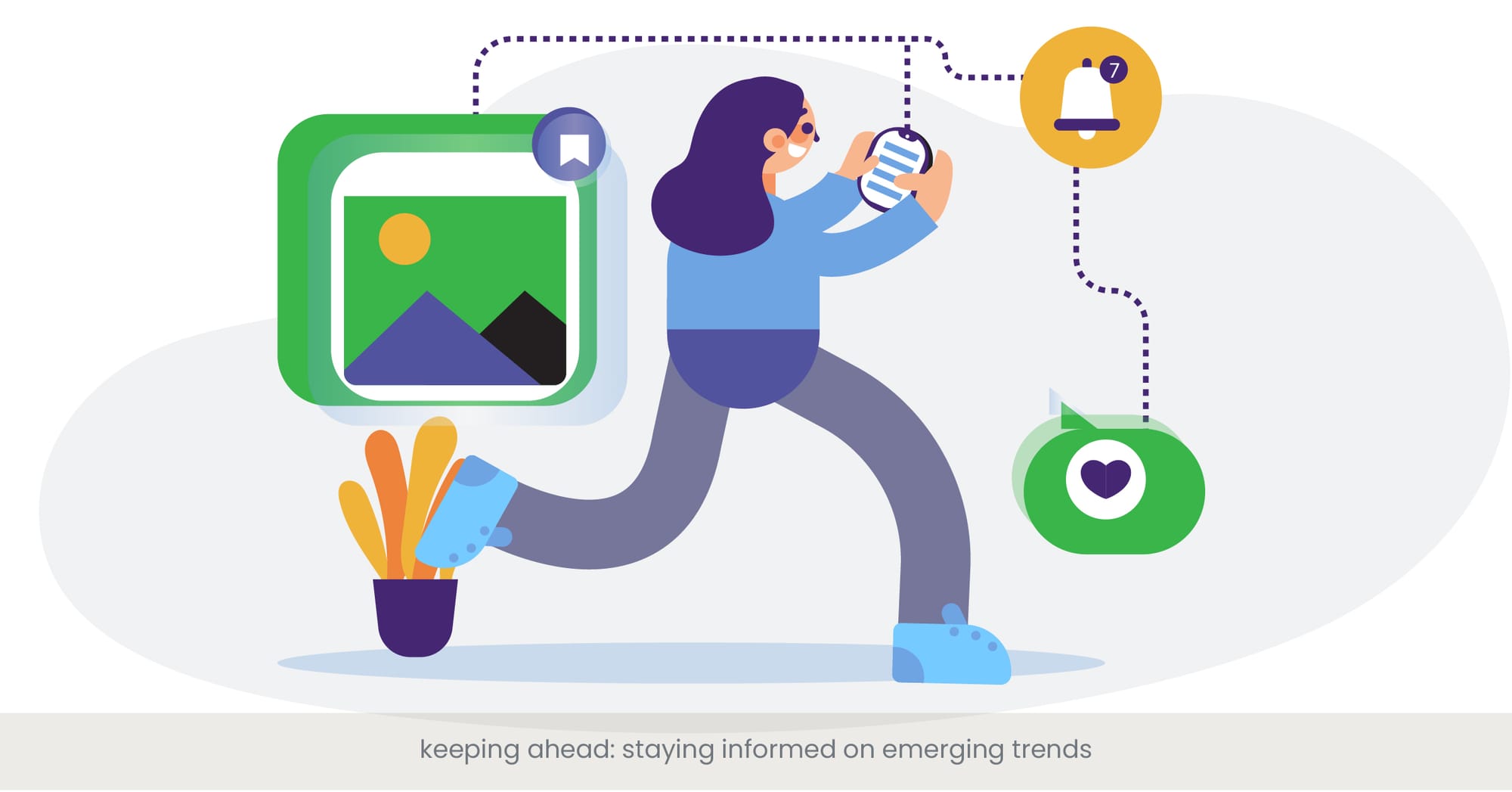
Introduction: The Importance of Being Proactive in Recruitment Design
In the fast-evolving field of recruitment, staying ahead of emerging trends is crucial for maintaining a competitive edge. This section discusses the importance of continuous learning and adaptation to keep recruitment strategies innovative and effective.
Background: The Dynamic Nature of Recruitment Technologies and Trends
The landscape of recruitment is continuously influenced by technological advancements, changes in candidate expectations, and evolving market conditions. To remain relevant and effective, recruiters must stay informed about the latest tools, strategies, and design innovations.
Real-world Applications: Adapting to New Trends
For example, a leading financial services firm regularly attends global HR technology conferences to integrate the latest tools into their recruitment presentations, such as AI-driven analytics and machine learning for better candidate targeting. Another company partners with design schools to keep their recruitment materials fresh and appealing, tapping into the latest aesthetic trends and design philosophies.
References and External Validation
Publications like the Future of Recruitment Report and insights from the Tech Recruitment Innovators Conference provide evidence that companies actively engaging with emerging trends not only improve their recruitment outcomes but also enhance their employer brand. This proactive approach is supported by data indicating that these companies see a 35% better retention rate due to improved match quality and candidate satisfaction.
Ready to innovate your recruitment presentations? Let us help.
Frequently Asked Questions
How do you write a recruitment presentation?
Start by clearly defining the objectives of the presentation, such as outlining the company's vision and culture, the roles available, and the benefits of working at the company. Use engaging visuals and a narrative structure to connect with the audience, and ensure that the content is tailored to the interests and expectations of potential candidates.
How do recruiters present candidates?
Recruiters typically present candidates by summarizing their qualifications, professional experiences, and the specific skills that make them a good fit for the position. This presentation can be enhanced with visual resumes or short video clips that highlight the candidates' accomplishments and strengths.
How to make a recruitment pitch?
A recruitment pitch should be concise and targeted. Highlight the unique aspects of the job description within your organization and the specific benefits of the role. Be clear about what sets new team and your company apart from competitors and how a candidate can grow and succeed within your team.
How do you end a recruitment presentation?
Conclude with a strong and clear call to action that encourages candidates to apply, connect on professional networks, or participate in upcoming recruitment events. Summarize key points and express enthusiasm about the job title and the prospects of welcoming new talents to your team.
What are some examples of presentation?
Examples include multimedia presentations, interactive webinars, virtual reality experiences, and personalized video pitches. These formats can be adapted to reflect the company’s brand and the specific audience of potential employees and hires.
How to start a recruitment speech?
Begin a slide show with a compelling hook that captures interest, such as a great presentation, a surprising statistic about the company or a powerful testimonial from a current employee. Introduce yourself and the company, setting the tone for an informative and engaging presentation.
How do you present a recruitment strategy?
Outline the goals, talent acquisition process, target demographics, and the channels and tools you will use to reach potential candidates. Discuss how the strategy aligns with the the company's culture and overall objectives and how it will be implemented and measured for success.
How to make a PPT for recruitment?
Design a PowerPoint presentation that is visually appealing and easy to understand. Include slides on the company overview, job descriptions, employee testimonials, and the application process. Use charts, infographics, and videos to make the presentation more engaging.
How to develop a strategic recruitment plan?
Analyze the company's current and future hiring needs, define the target candidate profiles, the best talent, select appropriate recruitment channels and tools, and set clear objectives and timelines. Ensure that the strategy is flexible enough to adapt to changes in the market or business priorities.
What is a recruitment template?
A recruitment template is a pre-designed document or presentation outline used to streamline the recruitment and hiring process. It typically includes sections for company information, job descriptions and responsibilities, candidate evaluation criteria, and interview schedules.

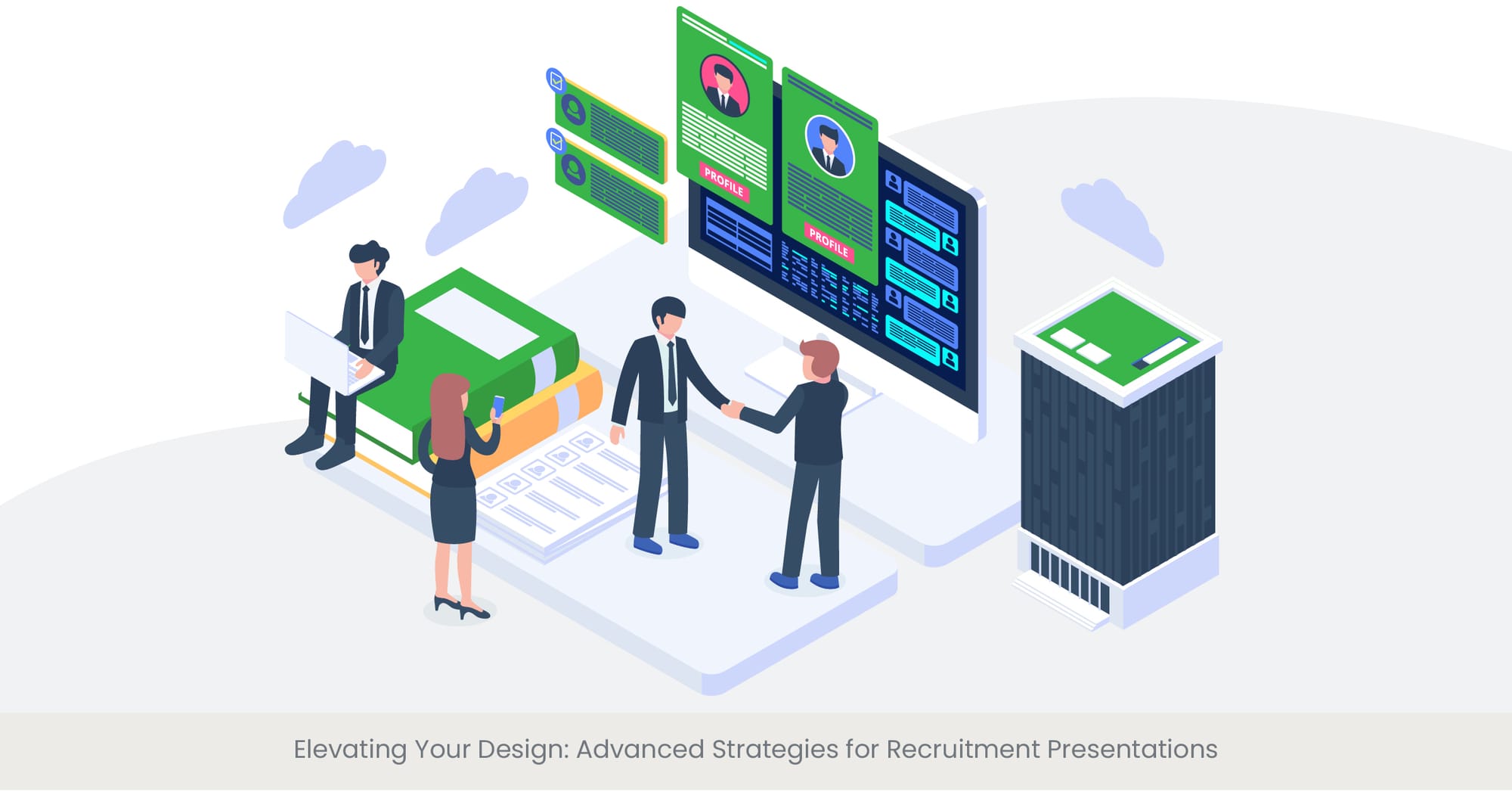

%20(1).jpg)
%20(1).jpg)


